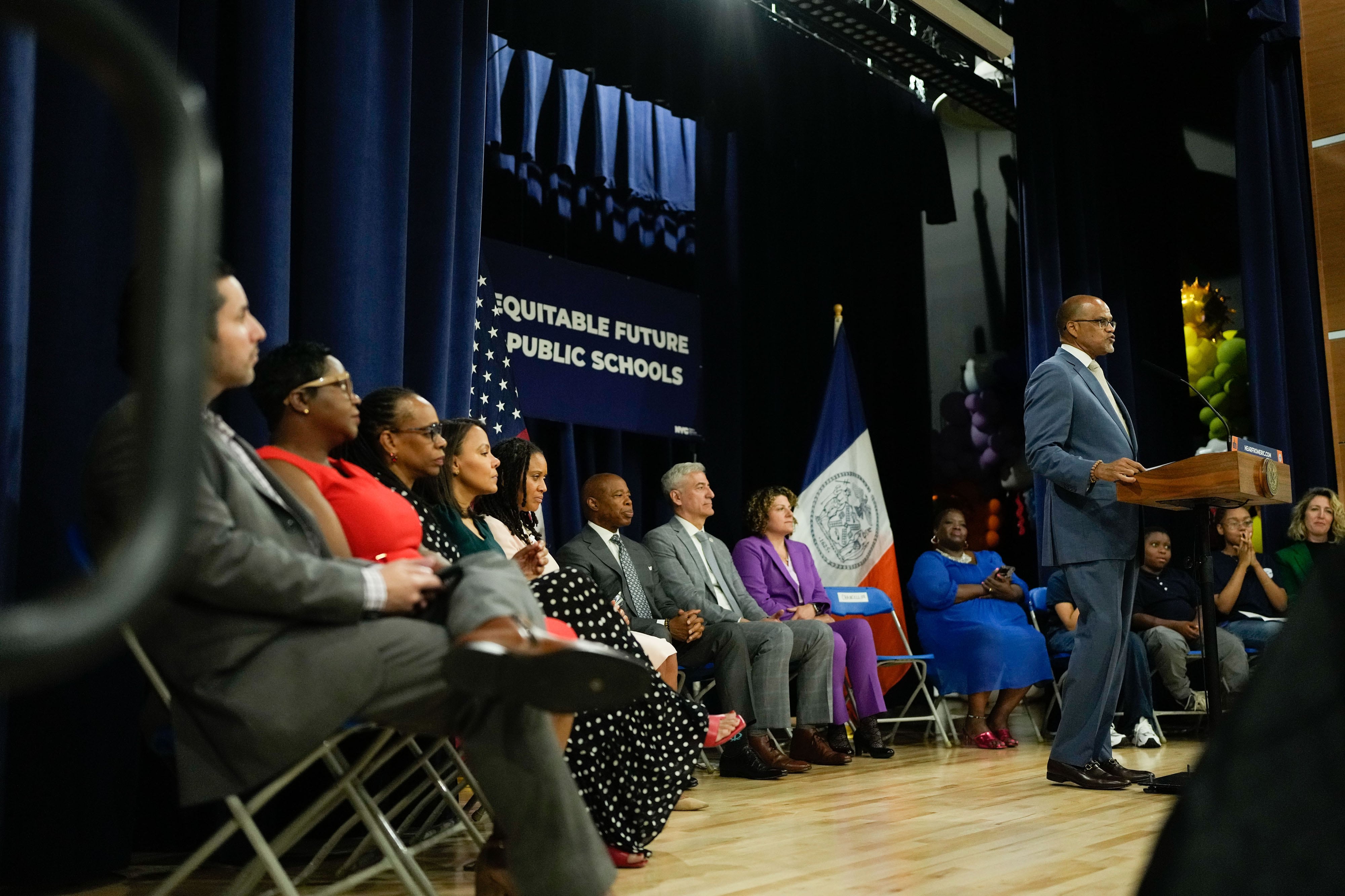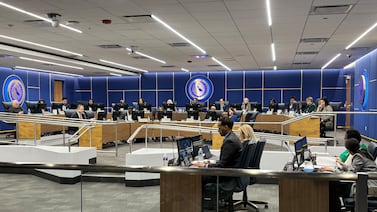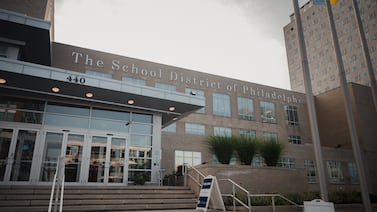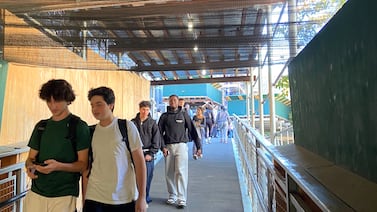Sign up for Chalkbeat New York’s free daily newsletter to keep up with NYC’s public schools.
Math instruction is the latest problem New York City officials are trying to solve.
Middle and high schools are adopting standardized math curriculums in hopes of addressing stark racial disparities in state test scores, Mayor Eric Adams said Monday.
Known as “NYC Solves,” the new initiative takes a page from the city’s literacy curriculum overhaul, the signature education policy of Adams and schools Chancellor David Banks, which requires elementary schools to choose from among three pre-approved reading curriculums.
“Schools all over the city, even on math, were just kind of doing their own thing,” Banks said at a press conference at Samara Community School in the Bronx. “That’s no way to run a system.”
The vast majority of high schools are in the process of adopting a single Algebra 1 curriculum. By this fall, 420 high schools will use Illustrative Mathematics for that subject, a program that emphasizes building students’ conceptual understanding of math rather than focusing on more step-by-step procedures. (Six high schools were granted waivers from using the curriculum; officials did not immediately say which ones.)
Meanwhile, over the next three years, all middle schools will be required to use an approved math program. Curriculums created by the companies i-Ready, Amplify, and Illustrative Math are currently approved by the department, though Deputy Chancellor Danika Rux said the city may tweak that list in future years. Local superintendents will be able to select which curriculums their schools use from the list, a process similar to the city’s literacy initiative. Officials said they have allocated $34 million to “NYC Solves” over five years.
The districts in the first round — Manhattan’s District 2; districts 7, 11, and 12 in the Bronx; Brooklyn’s districts 14, 15, and 32; and District 26 in Queens — are participating voluntarily, officials said. Those districts already widely use Illustrative Math, meaning many middle schools will likely not see significant changes next school year. About 63 of the initial 93 middle schools participating in the first phase are currently using the curriculum, though a spokesperson said other schools may have been using a free version that is not tracked centrally.
At the high school level, the math curriculum mandate is expected to extend to other high school grades, as well as elementary schools and District 75, which serves students with disabilities, in later phases of the initiative, though officials did not offer a specific timeline.
The curriculum overhaul comes as the city’s students have long struggled with the subject, and some educator advocacy groups have pushed for changes. Fewer than half of the city’s elementary and middle school students scored proficient on state math exams last year given to third through eighth graders. Urgency to address the issue has been heightened by pandemic learning losses, as well as stubborn disparities in math achievement between Black and Latino students and their white and Asian American counterparts.
Last year, just 34.3% of students who are Black and 35.7% who are Latino demonstrated proficiency on their math exams, compared to 70.2% of white students and 77.6% of Asian American students.
“That is wholly unacceptable,” Banks said. “As the data shows, not only do we have a literacy crisis in this country, we absolutely have a math crisis as well. And this struggle with math, for many of us, runs very deep, and it starts early.”
Banks suggested that the curriculum changes could be a challenge for teachers, many of whom he said are themselves uncomfortable with the subject.
The Illustrative Math curriculum has focused on posing unfamiliar math problems to students with minimal introduction, prioritizing student exploration with a goal of developing deeper conceptual understanding. It was developed by a University of Arizona professor in 2011, following sweeping changes to math teaching that occurred after the rollout of the Common Core standards, a set of benchmarks meant to give states shared academic goals.
Earlier this year, the curriculum left some New York City educators divided — with some arguing it represented an overdue shift away from rote memorization, while others worried it lacked the kind of structure and built-in repetition that many students need, particularly those who are struggling.
Marielys Divanne, the executive director of Educators for Excellence, an advocacy group that has pushed for math reforms, praised the shift.
“NYC Solves is another huge and much-needed step forward in helping our students achieve better outcomes in math,” she said in a statement.
Julian Shen-Berro is a reporter covering New York City. Contact him at jshen-berro@chalkbeat.org.
Alex Zimmerman is a reporter for Chalkbeat New York, covering NYC public schools. Contact Alex at azimmerman@chalkbeat.org.






